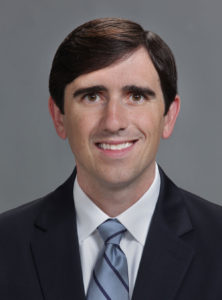Biceps Tendon Injury Specialist

Are you an athlete who participates in sports that involve heavy overhead lifting? If so, you may be at risk of tearing your proximal biceps tendon. A biceps tear can occur from repetitive overuse, a fall, heavy lifting or degeneration of the tendon over time. Biceps tendon injury specialist, Dr. Robert Boykin provides diagnosis and both surgical and nonsurgical treatment options for patients in Asheville who have suffered a proximal biceps tendon tear. Contact Dr. Boykin’s team today!
Anatomy of the Biceps Muscle
The biceps muscle is made up of two parts (heads) that originate from around the shoulder. The short head comes from the coracoid process of the scapula (shoulder blade), while the long head is a cord-like tendon that originates inside the shoulder joint (on the glenoid) and runs down the arm through the bicepital groove of the humerus bone. The tendon then connects with the short head and inserts on the radius bone of the forearm. The primary function of the muscle is to flex the elbow and rotate the forearm.
Proximal Biceps Tendon Injury
Proximal biceps tendon injuries usually affect the tendon of the long head and are the result of a weakened or inflamed tendon. This injury is common among individuals who lift weights or participate in repetitive activities that involve use of the shoulder (overhead sports, heavy labor, etc). The tendon can become weakened and inflamed over time which leads to pain and in some instances to a complete tear (rupture) of the tendon. Repetitive motion and irritation, decreased amount of blood flow, or pinching of the tendon against other structures in the shoulder area all thought to be causes of the injury. Biceps tendon injuries are also commonly seen in association with arthritis and tears of the rotator cuff muscles around the shoulder, which may allow the biceps tendon to subluxate (move out of position) from its normal groove. In certain cases, the tendon wears to the extent that it ruptures, which may cause pain and a deformity in the arm (called a popeye deformity). Shoulder specialist Dr. Robert Boykin is an expert at treating proximal biceps tendon injuries for patients in Asheville, Arden, and Fletcher, North Carolina.
Symptoms of a Proximal Biceps Tendon Injury
When a biceps tendon is injured, patients may experience the following symptoms:
- Rest
- Ice
- Anti-inflammatory medications (oral or topical gels)
- Injection of corticosteroids
- Physical therapy
- Change in daily routine to avoid actions that may inhibit the healing process
Diagnosis and Treatment
If it is suspected that you may be suffering from a biceps injury, Dr. Boykin will perform a physical examination of the shoulder in addition to X-rays to determine the severity of the injury and whether other areas of the shoulder are affected. Specific physical exam tests for biceps tendon injuries include the Speed’s test, Yergason’s test, and tenderness over the biceps groove. In certain cases a MRI is needed to visualize the course of the tendon, areas of injury, and damage to other parts of the shoulder (including the rotator cuff). If the diagnosis is consistent with tendonitis or a strained tendon, Dr. Boykin will usually recommend non-surgical measures including:
- Rest
- Ice
- Anti-inflammatory medications (oral or topical gels)
- Injection of corticosteroids
- Physical therapy
- Change in daily routine to avoid actions that may inhibit the healing process
Surgical Treatment for a Proximal Biceps Tendon Injury
If a complete proximal tear is present within the biceps tendon, then surgery will be discussed. In certain cases the pain will resolve with non-operative measures and the patient will be able to function well without surgery. If the patient has weakness, cramping, continued pain, and/or a bothersome visible deformity then surgery will be considered. Acute proximal biceps injuries can be repaired using a combination of arthroscopic and mini-open surgery with small incisions on the front of the shoulder. The area of diseased tendon is removed and the remaining healthy tendon is attached securely back to the bone. In cases where the tear is more chronic, a larger incision may be necessary to safely free up the tendon from the built up scar tissue.
In cases of continued pain with biceps tendonitis that have failed non-operative measures, partial tears, and tears associated with rotator cuff disease, surgery may also be considered. This procedure consists of a combination of arthroscopic and mini-open surgery to remove the diseased area of the tendon and reattach the healthy tendon to bone outside of the shoulder joint to prevent problems later. This procedure has been shown to be highly successful in alleviating the pain associated with biceps disease while preserving the normal motions of the shoulder.
For more information about biceps injuries and the appropriate treatments, please contact orthopedic shoulder, knee, and hip surgeon Dr. Robert Boykin, treating patients in Asheville, Arden, Fletcher and surrounding North Carolina communities.
